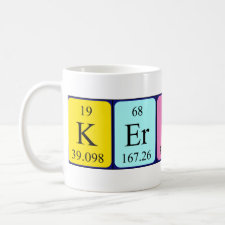
Authors: Golker K, Olsson GD, Nicholls IA
Article Title: The influence of a methyl substituent on molecularly imprinted polymer morphology and recognition - Acrylic acid versus methacrylic acid.
Publication date: 2017
Journal: European Polymer Journal
Volume: 92
Page numbers: 137-149.
DOI: 10.1016/j.eurpolymj.2017.04.043
Alternative URL: http://www.sciencedirect.com/science/article/pii/S0014305716315099
Abstract: In this report, we have investigated factors contributing to the morphology and template recognition of bupivacaine-imprinted copolymers of methacrylic acid (MAA) and ethyleneglycol dimethacrylate (EGDMA). To this end, MAA, the most commonly used functional monomer in non-covalent molecular imprinting protocols, was compared and contrasted with the closely related acrylic acid (AA) in terms of polymer morphologies, recognition characteristics, and molecular level events in the corresponding pre-polymerization mixtures. Two series of analogous bupivacaine-imprinted EGDMA-copolymers containing increasing fractions of either AA or MAA were studied through all-component MD simulations in the pre-polymerization phase, equilibrium binding experiments on corresponding synthesized polymers and morphology characterization by N2-sorption measurements. A higher degree of hydrogen bonding frequency between respective functional monomer and bupivacaine was recorded for the mixtures containing AA compared to those containing MAA. In contrast, results from binding experiments demonstrated higher binding capacities for the polymers prepared with MAA than for those prepared with AA, which is explained by differences in polymer morphology. The surface areas and pore volumes of the AA-polymers were higher than for the MAA-polymers and the overall pore structure in the AA-polymers was ink-bottle shaped while the pores in the MAA-polymers were slit-shaped. We suggest that the methyl substituent of MAA contributes to differences in the reaction kinetics for AA and MAA during polymerization and resulted in different morphologies, in particular pore shape, which affected mass-transfer and consequently the binding qualities of the materials
Template and target information: bupivacaine
Author keywords: molecularly imprinted polymer, Molecular dynamics, molecular recognition, morphology, methacrylic acid, acrylic acid



Join the Society for Molecular Imprinting

New items RSS feed
Sign-up for e-mail updates:
Choose between receiving an occasional newsletter or more frequent e-mail alerts.
Click here to go to the sign-up page.
Is your name elemental or peptidic? Enter your name and find out by clicking either of the buttons below!
Other products you may like:
 MIPdatabase
MIPdatabase









